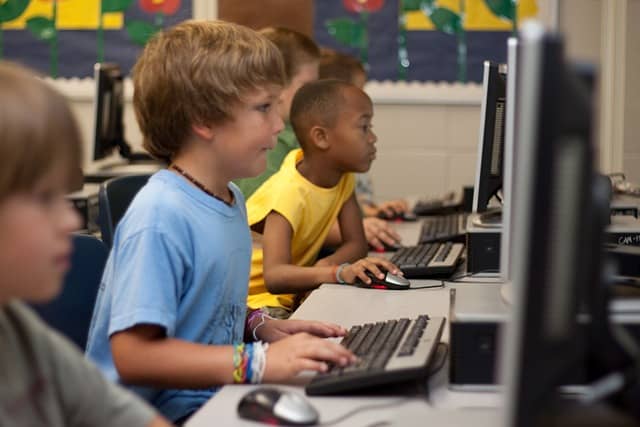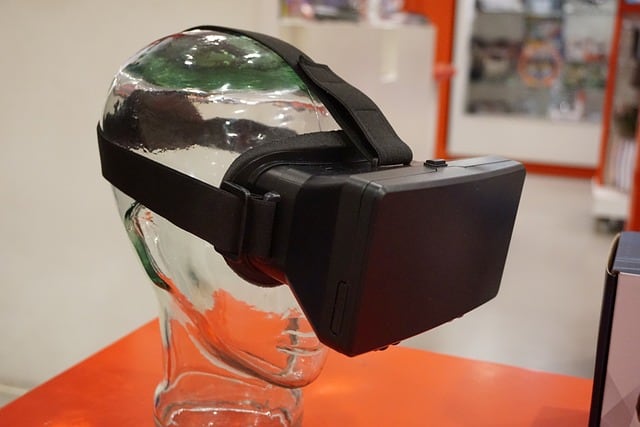Virtual Reality (VR) is rapidly reshaping the landscape of education, offering a powerful and immersive learning experience for students. As technology continues to advance, VR’s integration in classrooms has garnered significant attention, promising to shape the future of education. This article explores the potential benefits of VR in education and the challenges that arise when implementing VR systems for students.
By creating realistic simulations and virtual environments, VR goes beyond traditional teaching methods, allowing students to explore concepts, theories, and historical events in a more engaging and memorable way. The ability to visualize complex concepts enhances comprehension and retention, making learning more effective. However, as VR becomes more prevalent in education, ensuring the security and privacy of students using these systems becomes imperative.

This article will discuss the measures educational institutions can adopt to safeguard VR technology and protect students from potential risks. Ultimately, VR holds the potential to revolutionize education, but it is crucial to address the security challenges associated with its implementation to ensure the well-being and privacy of students.
The Potential of VR in Education
In the realm of education, the potential of virtual reality (VR) is undeniable. The integration of VR technologies into classrooms has opened up new possibilities for immersive and interactive learning experiences. VR in education offers students the opportunity to explore virtual worlds and engage in realistic simulations, enhancing their understanding of complex concepts.
One of the key benefits of VR education is its ability to provide experiential learning. Students can virtually visit historical sites, explore the depths of the ocean, or even travel to outer space. These VR learning experiences allow students to actively participate in their education, making it more engaging and memorable.
Additionally, VR can provide a safe environment for students to practice real-life scenarios. For example, medical students can perform surgeries in a virtual operating room, allowing them to gain valuable skills without the risk of harming real patients. This aspect of VR safety ensures that students can learn and make mistakes without any negative consequences.
As the technology continues to evolve, the potential of VR in education will only grow. By incorporating VR into classrooms, educators can create dynamic and immersive learning experiences that foster critical thinking, problem-solving, and creativity.
Ultimately, VR has the power to revolutionize education and empower students to reach their full potential.
Transforming Learning With Virtual Reality
Virtual Reality has the potential to transform learning in education. With its immersive and interactive nature, VR technology can revolutionize the way students learn and engage with educational content. Here are three ways in which virtual reality can transform learning:
1. Enhanced Visual and Experiential Learning:
VR allows students to explore virtual environments, interact with objects, and experience simulations that would otherwise be impossible or impractical in traditional classrooms. This hands-on approach promotes active learning and deeper understanding of complex concepts.
2. Personalized and Adaptive Learning:
Virtual reality can customize learning experiences based on individual student needs and preferences. Through VR simulations, students can receive personalized feedback, practice real-world skills, and progress at their own pace, ensuring a more effective and engaging learning process.
3. Global and Collaborative Learning:
Virtual reality can connect students from different locations and cultures, enabling them to collaborate and learn together in virtual classrooms. This fosters cultural understanding, empathy, and global citizenship, preparing students for the interconnected world they will live and work in.
Enhancing Student Engagement Through VR

Enhancing student engagement through virtual reality (VR) offers the potential for active learning experiences and immersive educational simulations.
With VR, students can actively participate in their learning, exploring virtual environments and interacting with virtual objects. This level of engagement can deepen their understanding of complex concepts and foster a sense of curiosity and excitement in the classroom.
Active Learning Experiences
The implementation of virtual reality technology for active learning experiences in education holds promising potential for enhancing student engagement.
Virtual reality (VR) can provide students with immersive and interactive learning experiences that go beyond traditional classroom settings.
Here are three ways in which VR can enhance active learning experiences:
- Experiential Learning: VR allows students to explore realistic simulations and environments, enabling them to engage in hands-on learning and gain practical experience in various fields.
- Personalized Learning: VR can adapt to individual student needs and preferences, allowing for customized learning experiences that cater to different learning styles and paces.
- Collaborative Learning: VR facilitates collaboration among students, enabling them to work together in virtual environments and solve problems collectively, fostering teamwork and communication skills.
Immersive Educational Simulations
Immersive educational simulations in virtual reality have the potential to greatly enhance student engagement in the classroom. By leveraging the power of VR technology, educators can create realistic and interactive learning environments that captivate students’ attention and make learning more enjoyable and effective.
These simulations allow students to actively participate in virtual scenarios, such as exploring ancient civilizations or conducting scientific experiments, providing a hands-on experience that traditional teaching methods cannot replicate. Through VR, students can visualize complex concepts, develop problem-solving skills, and gain a deeper understanding of the subject matter.
Moreover, immersive educational simulations foster collaboration and teamwork as students can interact with their peers in the virtual world.
As the technology continues to advance, VR has the potential to revolutionize education by transforming passive learners into active, engaged participants in their own learning journey.
Overcoming Challenges in Implementing VR in Education
One significant challenge in implementing virtual reality (VR) in education is ensuring accessibility for all students. While VR has the potential to enhance learning experiences, there are barriers that need to be addressed to ensure equitable access for all students.
Here are three key challenges in implementing VR in education and potential solutions:
- Cost: VR technology can be expensive, making it difficult for schools with limited budgets to adopt. To overcome this challenge, schools can explore partnerships with VR companies to access discounted or subsidized equipment. Additionally, educators can consider using mobile VR headsets that are more affordable and compatible with smartphones.
- Technical expertise: Implementing VR requires technical knowledge and support. Schools can address this challenge by providing professional development opportunities for teachers to learn how to use VR technology effectively in the classroom. Collaborating with technology experts and integrating VR into existing curriculum can also help bridge the technical expertise gap.
- Infrastructure requirements: VR requires a robust infrastructure, including high-speed internet and powerful computers. Schools need to ensure they have the necessary infrastructure in place before implementing VR. This may involve upgrading Wi-Fi networks, investing in high-performance computers, and establishing policies to manage bandwidth usage.
Ensuring Security in Virtual Reality Education

Addressing the challenges of implementing virtual reality in education, ensuring security in virtual reality education is essential for creating a safe and protected learning environment for students. As virtual reality becomes more prevalent in classrooms, it is crucial to prioritize the security of these systems to protect students from potential risks.
One of the main concerns in virtual reality education is ensuring the privacy and confidentiality of student data. Educational institutions must implement robust security measures to safeguard sensitive information, such as student profiles, progress reports, and personal data. This includes using secure networks, encryption protocols, and access controls to prevent unauthorized access or data breaches.
Additionally, it is important to address safety considerations to protect students physically and emotionally. Virtual reality experiences should be carefully curated to ensure they are age-appropriate and do not expose students to harmful or distressing content. Teachers and administrators must also establish guidelines for responsible use of virtual reality equipment to prevent accidents and injuries.
Furthermore, cybersecurity threats pose a significant risk to virtual reality education. Educational institutions must regularly update and patch their virtual reality systems to protect against malware, viruses, and hacking attempts. It is also crucial to educate both students and teachers about cybersecurity best practices to minimize the risk of cyberattacks.
Looking Ahead: Future Trends in VR Education
As we move forward into the future of education, the potential for virtual reality to revolutionize the learning experience is becoming increasingly evident. Here are some future trends to watch out for in VR education:
- Enhanced Collaboration: Virtual reality will enable students from different parts of the world to come together in a shared virtual space, fostering collaboration and cultural exchange. This will provide opportunities for global learning experiences and broaden students’ perspectives.
- Personalized Learning: VR technology can adapt to individual students’ needs and preferences, allowing for personalized learning experiences. Students can learn at their own pace, explore topics that interest them, and receive tailored feedback, enhancing their engagement and understanding.
- Real-world Simulations: VR can create immersive simulations that allow students to gain practical experience in fields such as medicine, engineering, and the arts. This hands-on learning approach will bridge the gap between theory and practice, preparing students for real-world challenges.
These trends in VR education hold great promise for the future, as they have the potential to transform traditional classroom learning into a dynamic and interactive experience that engages students on a deeper level.
Frequently Asked Questions
How Can Virtual Reality Be Used to Enhance Collaboration and Teamwork Among Students in the Classroom?
Virtual reality can enhance collaboration and teamwork among students in the classroom by providing immersive experiences where they can interact and engage with each other, solving problems, and exploring new concepts in a virtual environment.
What Are Some Examples of Specific Subjects or Topics That Can Be Effectively Taught Using Virtual Reality?
Virtual reality (VR) has the potential to effectively teach various subjects and topics in education. For example, VR can be used to enhance understanding of complex scientific concepts, historical events, and cultural experiences, providing students with immersive and interactive learning experiences.

Are There Any Studies or Research That Demonstrate the Effectiveness of Virtual Reality in Improving Student Learning Outcomes?
Yes, there are multiple studies and research that demonstrate the effectiveness of virtual reality in improving student learning outcomes. These studies highlight increased engagement, retention, and overall academic performance when using VR in education.
What Are the Potential Ethical Considerations or Concerns Related to the Use of Virtual Reality in Education?
Potential ethical considerations in using virtual reality in education include privacy concerns, ensuring equal access for all students, and addressing the potential for addiction or overreliance on VR. Safeguarding students’ well-being and maintaining ethical guidelines are essential in integrating this technology in education.
How Can Schools or Educational Institutions Ensure That Virtual Reality Systems Are Accessible and Inclusive for All Students, Including Those With Disabilities?
Schools and educational institutions can ensure accessibility and inclusivity of virtual reality systems for all students, including those with disabilities, by providing adaptive technologies, designing VR experiences with universal design principles, and offering training and support for teachers and students.
Conclusion
In conclusion, the potential of virtual reality in education is immense. By transforming learning and enhancing student engagement, VR has the power to revolutionize the way students acquire knowledge.
However, it is crucial to address security concerns to ensure the safety and privacy of students. By implementing measures to safeguard VR technology, educational institutions can embrace this innovative tool while protecting their students.
Like a portal to new worlds, virtual reality in education holds the promise of unlocking exciting and immersive learning experiences for students.
